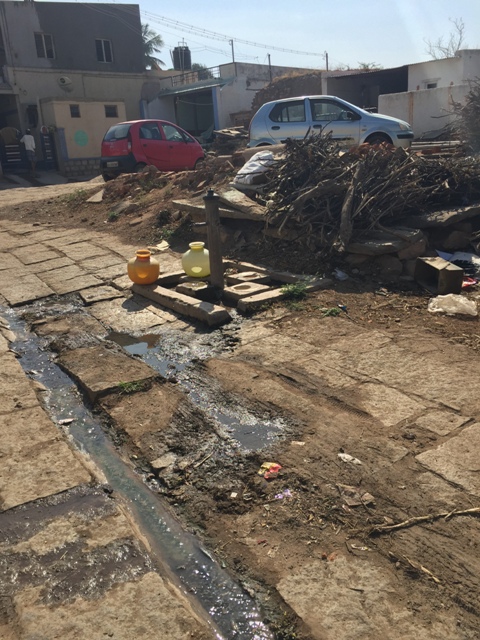Sanitation and Hygiene
Simhastha leaves farmers fuming
Posted on 12 Jun, 2016 07:38 PMRamesh Mali, a farmer in his late thirties, looks at his farmland nervously. It has been 13 days since the Simhastha Maha Kumbh festival, 2016, concluded. The district administration had acquired his four bigha land (approximately 0.64 hectares) for the festival. The barricades and the concrete left on his land give us the idea that the land is not fit for farming this season.

Mahila Milan's toilets stand out in Wadala
Posted on 07 Jun, 2016 09:27 AM
Young professionals lead the way in water and sanitation
Posted on 31 May, 2016 12:22 PM Hirehandigola village in Gadag district of North Karnataka is an unsurprising picture of rural India.
Hirehandigola village in Gadag district of North Karnataka is an unsurprising picture of rural India.

Breaking the silence: World Menstrual Hygiene Day
Posted on 30 May, 2016 08:43 PM
Subarnarekha is dying. Who’s responsible?
Posted on 28 May, 2016 05:46 PMIt would not be an exaggeration to say Subarnarekha (Line of gold) is a film that left an indelible mark on Indian cinema. The film, by Ritwik Ghatak, is inspired by a river by the same name and narrates the reality around the river which flows through the present day Jharkhand, West Bengal and Odisha, before draining into the Bay of Bengal.

Towards a trash-free period
Posted on 27 May, 2016 08:11 PM
Breaching barriers towards better menstrual hygiene
Posted on 27 May, 2016 04:06 PMThe female menstrual cycle is the intricate work of hormones. Usually, girls start their cycle anywhere between 12 and 17 years of age when a series of changes prepare their uterus for child-bearing. The body produces the hormone oestrogen which stimulates the growth of a protective lining inside the uterus to cushion the baby in preparation of pregnancy every month.

Economic losses close to 6% of India's GDP mainly due to sanitation deficit: World Bank
Posted on 23 May, 2016 11:00 PM
Changing seasons and diarrhoeal diseases
Posted on 19 May, 2016 09:07 AMAccess to safe drinking water and diarrhoeal diseases in India

"SWM-ing" against the tide
Posted on 16 May, 2016 10:37 AMThe road to hell, they say, is paved with good intentions. A visit to almost any village or small town in India today will serve to confirm that statement. In an undoubtedly laudable attempt to keep the village clean, gram panchayats tend to dump waste in a convenient patch of land on the outskirts.






